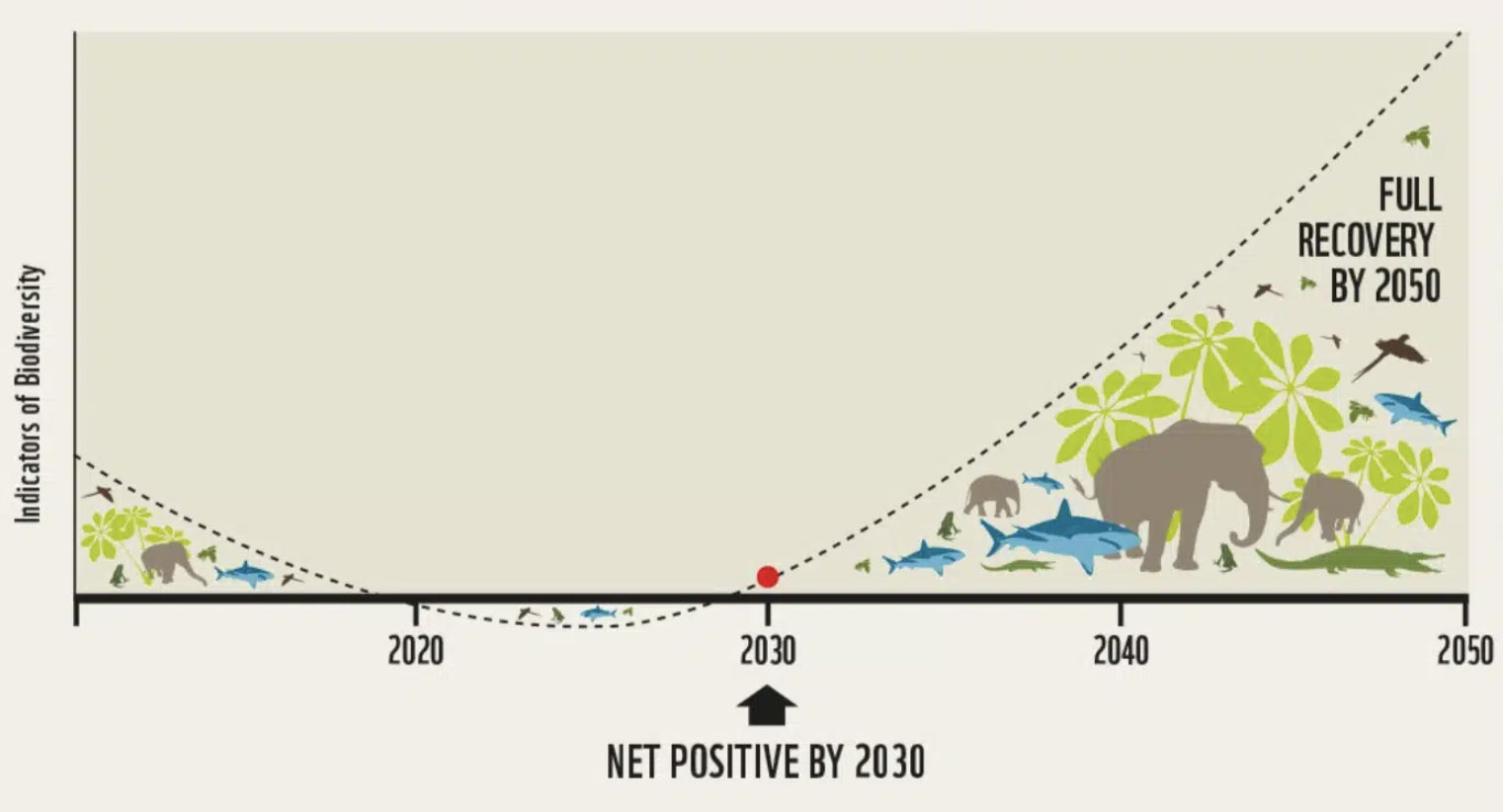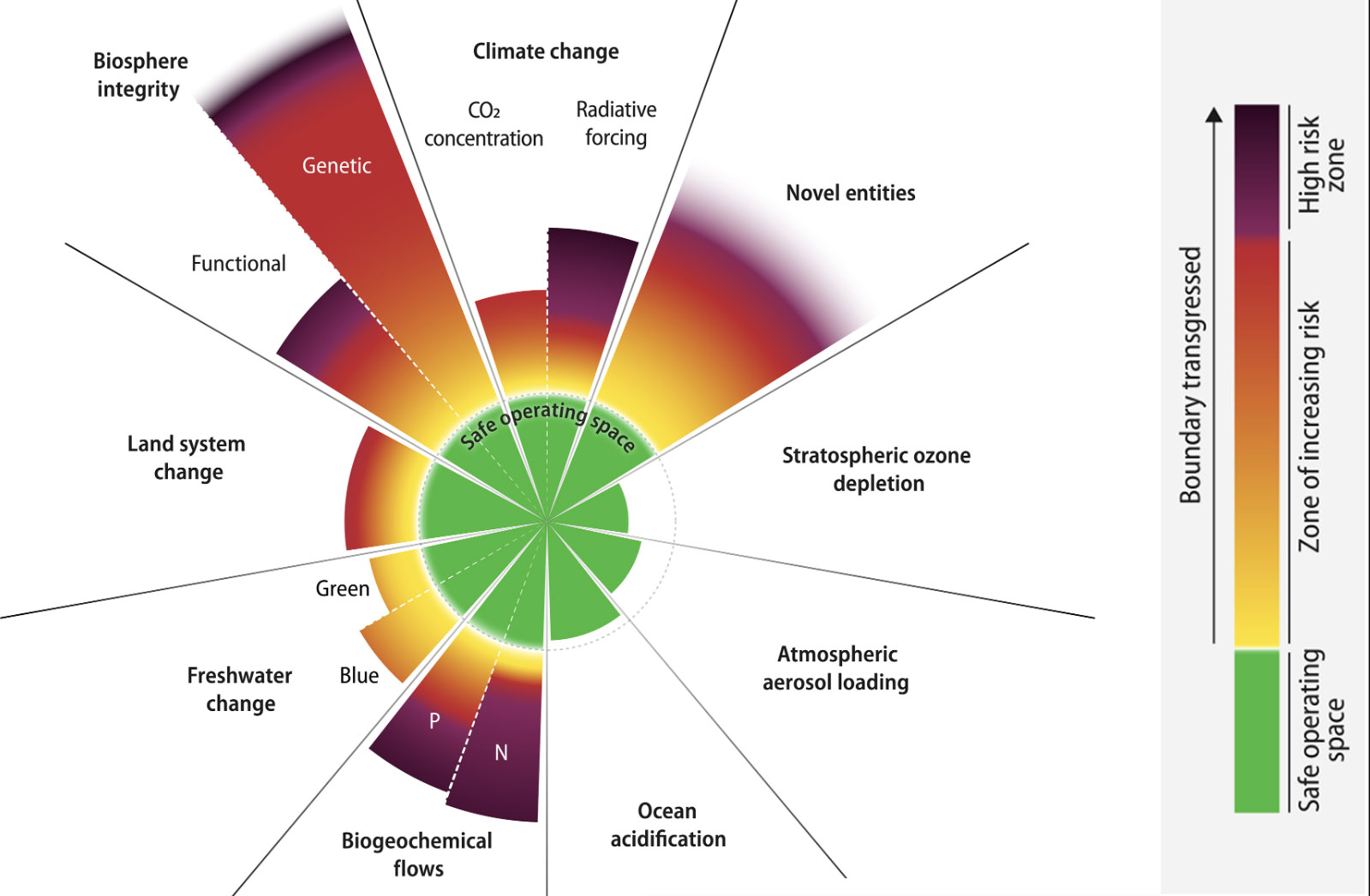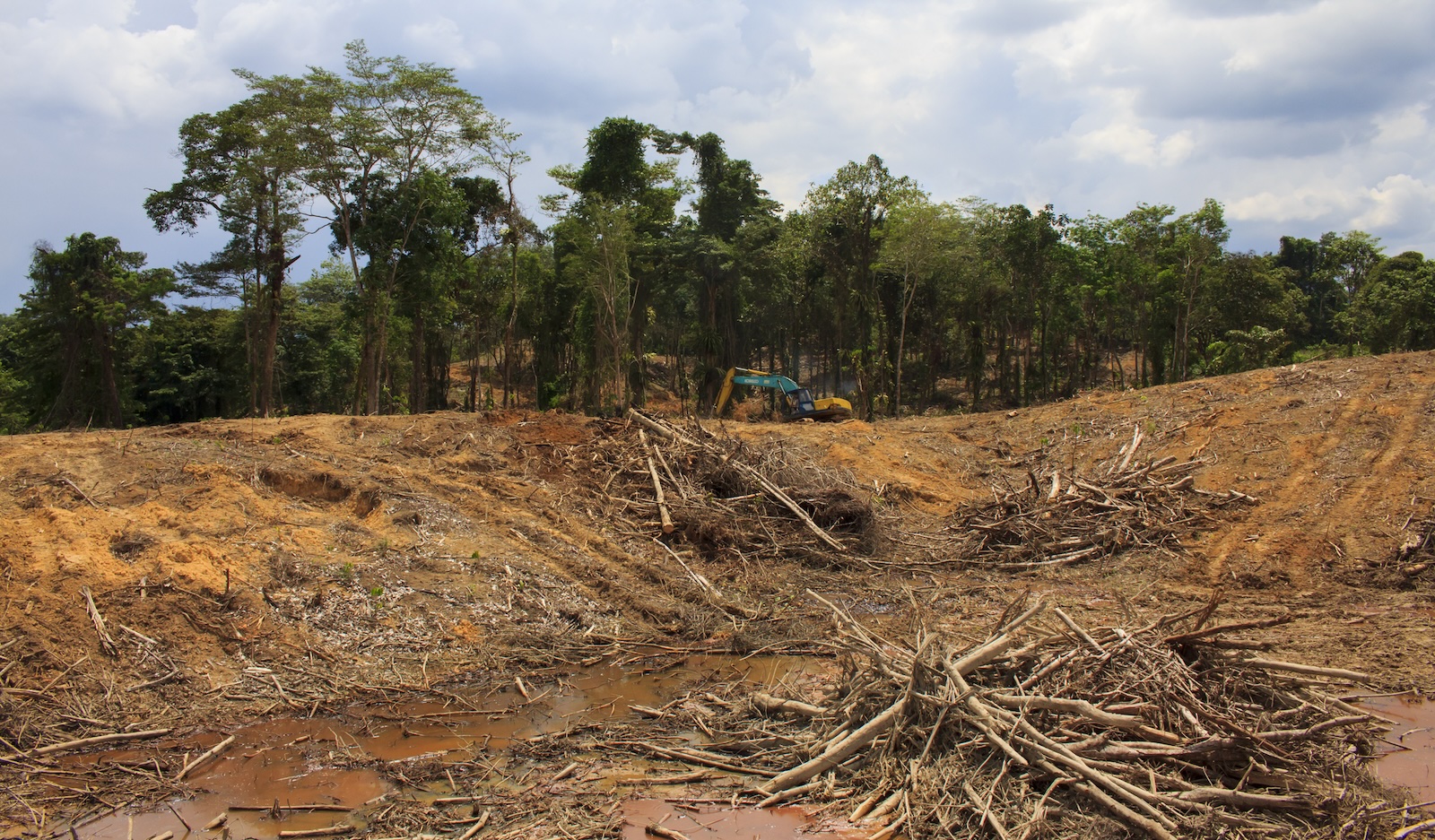It’s time for companies to consider an ‘Internal Price on Nature’
The concept of ‘internal carbon pricing’ galvanized corporate action on climate change. Could ‘internal nature pricing’ do the same for biodiversity?

The mission of the Kunming-Montreal Global Biodiversity Framework is to rapidly bend the curve on ecosystem degradation and biodiversity loss, achieving a “nature positive” world by 2030 with a full recovery by 2050. Courtesy of the Nature Positive Initiative, 2022.
With the concept of ‘nature positive’ now taking root along with new reporting frameworks like TNFD, CSRD, and SBTN, there is suddenly enormous pressure on companies to assess their impacts on ecosystems and biodiversity and then chart the transformation of nearly every aspect of their business operations — from local impacts of their owned facilities to remote impacts associated with their supply chains.
By 2030!
In many recent discussions with corporate leaders, I’m sensing a gnawing anxiety beginning to emerge. Just as companies were starting to get their heads around achieving ‘net zero’ in alignment with the Paris Climate Agreement, the consensus has arrived that companies must now also achieve nature positivity in additional to climate neutrality.
The Kunming-Montreal Global Biodiversity Agreement (KMGBF) ratified at the end of 2022, effectively adopted the goal of “nature-positive by 2030” as its core mission. And like the Paris Agreement, there is a stated expectation that companies must do their part to achieve the goal, even though they are not official parties to the Convention. There are a few big differences between the two targets.
First is the timeline. The Paris Agreement set a “leisurely” timeline of 35 years to reach net zero. The KMGBF gave everyone just eight years. The latest science, in particular the latest Planetary Boundaries report, shows that the collapse of biodiversity and ecosystem services is posing an even graver and more urgent threat to humanity than climate change, and therefore needs to be addressed more rapidly.

Current status of control variables for the nine planetary boundaries showing biosphere integrity, in particular genetic diversity, far exceeding all other boundaries. The green zone is the safe operating space. Yellow to red represents the zone of increasing risk. Purple indicates the high-risk zone where interglacial Earth system conditions are transgressed with high confidence. From Fig. 1, “Earth beyond six of nine planetary boundaries” (Richardson et al. 2023).
The second major difference is the immense complexity involved in measuring progress toward the target. The Paris Agreement boils everything down to a single universally relevant unit — one tonne of carbon dioxide (CO2). Of course, decarbonizing the global economy is no small feat, but the goal itself is simple: get to zero. When it comes to measuring progress towards nature positivity under the KMGBF, life gets complicated fast.
The overall intent is clear — reverse the cataclysmic decline in biodiversity (more than two-thirds of all vertebrate life on the planet wiped out since 1970). But what’s the unit of change? We have a myriad of domains we’re dealing with — land, freshwater, oceans — and those are subdivided into a myriad of different sub-domains. For example, there are 844 terrestrial ecoregions, each with its own unique set of variables, including soil biology, flora, and fauna.
If a company wanted to become truly nature-positive, it would first have to understand in which of these domains the business has material impacts (all the way through its entire supply chain), and in what ways the company has impacted these environments. Was essential habitat for biodiversity converted to a plantation? Is the water table being severely depleted? Is the soil, water, or air being polluted by industrial processes? Are these pollutants having effects downstream, harming wetlands or coral reefs?
Each one of those questions has to be answered with a different method using a different set of variables. And those variables will vary greatly across subdomains. The baselines you might use to understand biodiversity loss or gain in a moist tropical forest will be different than a dry tropical forest, and so on. So instead of one universal unit like CO2, we have thousands to contend with.
Fortunately, frameworks like SBTN offer a clear approach to classifying these impacts and what can be done to mitigate or compensate for them. And more and more technology and services companies are starting to come online to help companies with the mapping of their impacts; the reengineering of business processes to reduce environmental degradation; as well as Measurement, Reporting, and Verification (MRV) systems. But it is a gargantuan set of tasks. I suspect for most companies, even the most committed environmentally friendly companies, it will take three to five years just to establish a roadmap to becoming nature positive.
Can ‘Internal Nature Pricing’ help out?
There is a lot of work to be done, but companies can get the gears moving by considering an Internal Price on Nature (IPN). Like an Internal Price on Carbon (IPC, alternatively known as Internal Carbon Pricing or ICP), this approach allows a company to price in externalities that pose long term risks to the business (and to society as a whole). According to Carbon Disclosure Project’s latest survey, the use of IPCs is growing. Over 1,200 reporting companies now have carbon pricing in place and another 1,500 are planning to implement an IPC in the next two years. More than half of the world’s biggest companies now have an IPC in place.
There are three broad categories of risk that an IPN could help to mitigate:
- Social/Brand risk. As public opinion galvanizes around the need for companies to “do no harm” the companies at the forefront of nature positive action will be considered more valuable and relevant both to consumers and investors.
- Regulatory/Legal risk. It’s only a matter of time before regulations kick in requiring companies to disclose their nature impacts. There will be legal expenses and potentially punitive damages paid by ill prepared companies.
- Material risk. Companies require a safe environmental operating space if they are to have successful businesses over the long term. If they over-exploit the natural resources upon which their revenues are based (timber, fish, minerals, water, etc.) or if they poison their own backyards, they may face cataclysmic supply chain disruptions in the future.
When the concept of an Internal Price on Carbon was first introduced and then popularized by early movers like Microsoft, it was a game changer for voluntary corporate action on climate change. Given the reality that a mandated carbon tax would likely not come to pass, the IPC offered a way forward for companies that wanted to take action to address their climate impacts by creating a performance-based incentive. In a sense, the IPC works as a voluntary internal “tax” — the less CO2 emissions your department produces, the less it has to “pay” thereby gradually increasing the topline earnings of the company.

Rainforest is destroyed to make way for palm oil plantations in Borneo, Malaysia. Image credit: © Richard Carey
It also allows a pool of capital to be developed that can be deployed to enact the transformations that the company must make to reach net zero emissions. This can be internal investments – for example, outfitting buildings with solar panels – as well as beyond value chain contributions to compensate for past emissions – for example, providing funds for forest conservation and restoration.
The Internal Price on Nature would act in a similar way, helping to build buy-in across a company’s entire operations, from the C-suite to suppliers to entry level staff. It would also make a company more attractive to new talent. Companies with strong sustainability and climate policies have been shown to be more attractive to young professionals, with two-thirds of young employees saying they would prefer a sustainable company.
Recently at One Earth, we have been in discussion with several major companies who are exploring this concept, and we encourage others to embrace it as well. There is a lot to be worked, but as Milkywire points out in their latest guide to setting up an internal carbon fee, perfect is the enemy of the good. Initially, it’s the implementation of a fee, any fee, that is more important than figuring out exactly how to price every aspect of a company’s impact on the nature world. One approach, which we’re recommending, is for companies to implement an “Earth fee”. To start, this can be something as simple as a five-basis point fee on revenue (1 cent on $20 of revenue). Eventually this can be linked to specific units of impact, for example hectares of land degraded over a single year.
Another option is to start with an estimate based on a sector-wide average of environmental impacts. A new study, Natural Capital at Risk, put out by UNEP's TEEB program (The Economics of Ecosystems and Biodiversity) finds that companies have a total of about $4.5 trillion in unpaid environmental externalities (not including climate impacts which account for another $2.8 trillion). It's not a simple task, but firms like Trucost (owned by S & P Global) offer data and services to companies looking to put a price tag on their environmental footprint.
The ‘Internal Price on Nature’ is just an idea for the moment, but we believe it can be a powerful catalyst for change, allowing companies to align their business units around a common goal of protecting and restoring the ecosystems and biodiversity upon which we all depend. We invite anyone to join in this new exploration!



